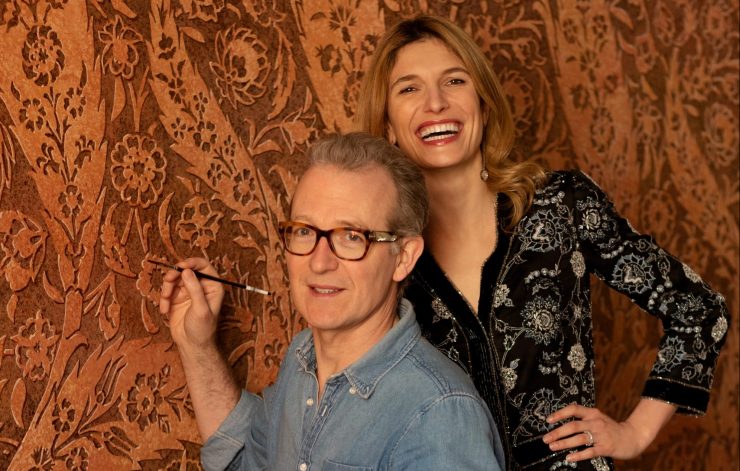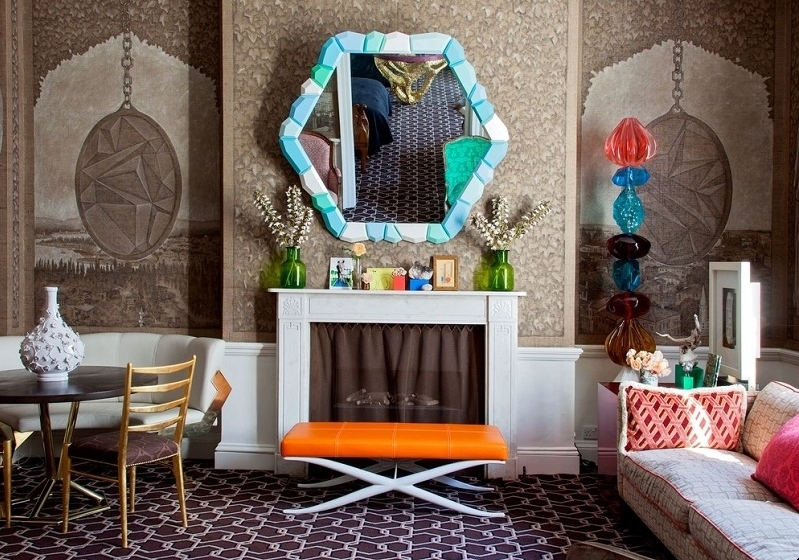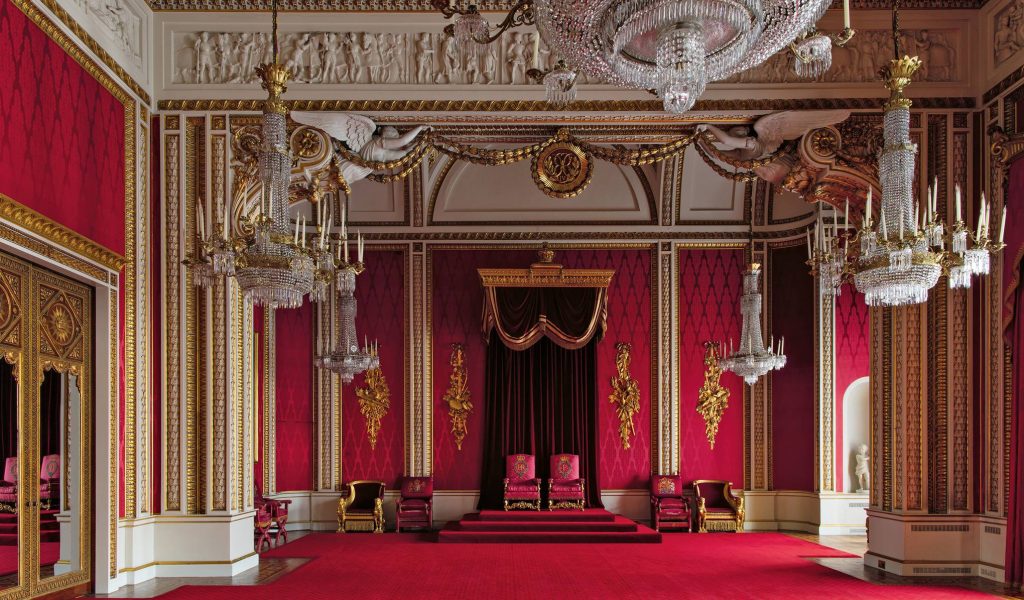
Artistic Interiors: Ashley Hicks’ Adventurous Collab with Martina Mondadori
“The Sistine Bathroom” – that’s the name of the creative genius of Ashley Hicks, renowned for his bathroom adorned with pittura, a fresco art complimenting the works of Michelangelo. This lockdown infused surge of creativity is an exponent that befittingly protrudes Hicks’ nonchalant personality and outlook on art.

Whether it envelopes creating a range of exquisitely decorative elements deriving from his obelisk-inspired ideas or his charismatic trompe l’oeil illustrations that capture the intrinsic nature of his imagination in its purest form, this has become the feature of his social media profiles and publications, where he translates the ebullient spirit of art in his own distinct flavor.

His works have always resembled a grand campaign on the bespoke yet glamorously discernible attitude of interior design. This was on full display in his supernal publication of the 2018 volume of the Buckingham Palace: The Interiors, where he calibrated the classic yet privy nature of an interior design that depicted a story of eras.
It was poetically followed by another photography-inspired masterpiece in the shape of 2019’s Rooms with a History: Interiors and their Inspirations, a crafty collection of the album which covers Hicks’ interior inspirations that seamlessly calibrated his creative energy, shying away from the aesthetic rules that he so enthusiastically downplays.
This love for insouciant creative impression was one of the many aspects that brought Ashley Hicks in collaboration with Martina Mondadori and her magazine, Cabana. Mondadori’s design publication has potently transformed into an astute interior fashion symbol, acquainting the world with the unique individualistic perceptions that encompass the domain of interior designing.
Hicks’ contributions for the magazine proved to be the cornerstone of his blooming relationship with Mondadori, which centered on taking liberties and exploring the aesthetics of the interior design while marrying the classic artistic design impressions with the contemporary decorative elements.
Citing admiration for Hicks’ penchant of taking liberties and dishing out an inspirational design impression, Mondadori resolved to employ Hicks’ creative genius for her new apartment back home in Milan. This opportunity compelled Hick to summon his intrinsic design tendencies that would satiate his love for furnishing a painting spectacle for interiors.
Obviously, it was promulgated by the instance that he harbors a strong professional bond with Mondadori. “We complement each other,” says Hicks, “and compliment each other, so it all works quite well.”
To devise a dazzling design scheme, Mondadori sent the images of her classic bourgeois space, constituting three linked rooms conforming with the original parquet floors and minimalistic glazed doors.
When the Covid-19 travel restrictions were relieved, Mondadori traveled to Hicks’ Oxfordshire home, where they both delved into curating a formidable design plan for the apartment. The arrangement made was to furnish a distinction between the three rooms by garnishing them in different design schemes while employing the careful use of Egyptian curtains embroidered in the Cairene souks by Mondadori’s friend Goya Sawiris of Malaika in a bid to handsomely separate the rooms.
Conforming to the Hicks’ trademark style, the apartments’ small sitting room was elegantly embellished in the Trompe l’oeils engraved on hessian panels, adding a touch of class to the whole spectacle.
The other elaborate detail delicately instilled into the interior designs was furnishing the sitting room walls with the Piranesi’s original 1777 studies of the Paestum ruins. The lounge was intended to give more of a tranquil look as Hicks had carved it by closing the door from the former dining room to the terrazzo-floored corridor, which prominently encompassed the rooms in the apartment.
Moreover, a simplistic yet classy saz-patterned stencil was initially employed to decorate the rooms, which was later painted in highlighted shadows to accompany the overall laid-back feel of the rooms. The overdoors, made of solid wood, were treated as a canvas for elaborate still life paintings, where Hicks derived inspiration from the masterpieces of art from Milan’s charming Villa Reale.
Mentioning Mondadori’s romance with the culture of the Middle East and Renaissance Italy, Hicks displayed consideration for the textiles that would be intensely relevant to the references of the two dimensions.
Hence, he derived imagination from two medieval fabrics in the shape of Ottoman saz silk adorning a motif and a cut velvet from the Renaissance period to vehemently compliment Mondadori’s admiration for the intricate textiles. This facet would be visible in Cabana’s first fabric collection that is being developed by the founder herself.
In addition, Hicks gave his own taste to the apartment by incorporating his own textile for covering the shelves and other places. The cloth was inspired by a late-15th-century Florentine velvet at the Victoria and Albert Museum and was carefully chosen to add value to the aesthetics of the living space.
To commemorate this elaborate interior designing commitment, Hicks then painted a portrait of Mondadori and her children to provide a cherry on the top of the artistic adventure that had transpired within her apartment. A befitting endorsement for two people who admire interior design in its most intrinsic form.
View the Ashley Hicks video channel
